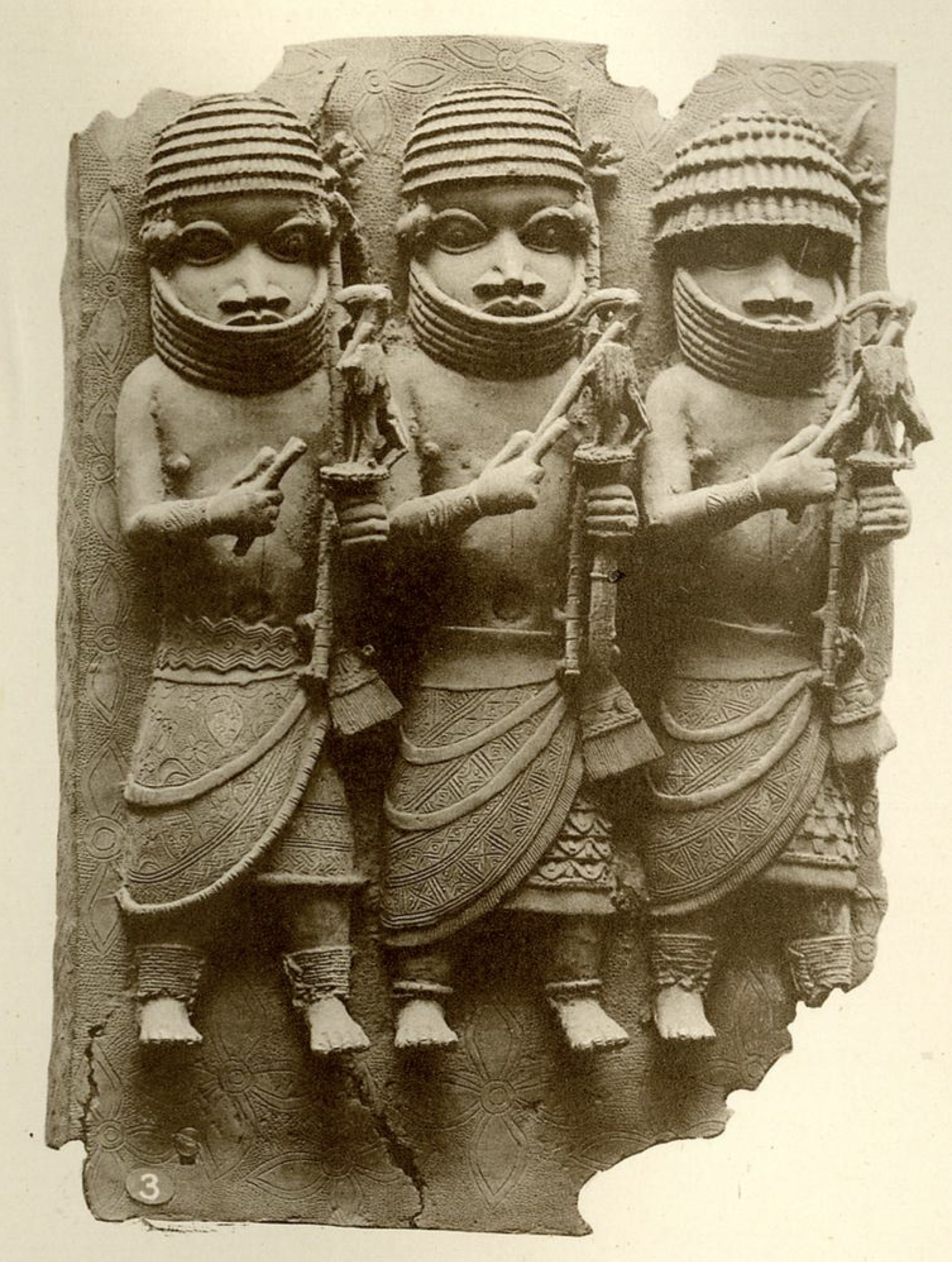Galerie Wolfgang Jaenicke
An Ama plate
An Ama plate
Couldn't load pickup availability
An Ama plate, depicting three high ranking personalities with eagles on their hands
Ama is a pictorial combination of figures that has a historical explanation or is a visual representation of a historical event. Ama had a mnemonic purpose, aiding one to recall the events or persons represented in the artwork. Benin oral traditions are popularly transmitted in the form of commemorative festivals, stories, plays, songs, poems, riddles, proverbs and other forms of oral literature. Ben-Amos (1980:28) observed the existence of over nine hundred known plaques which provided a testimony to court life at the time of Ọba Esigie, considered ‘a sort of pictorial record of events in Benin history, an aid to memorizing oral traditions’.
Although the objects grouped here are singularly described as Ama in Edo, in English they are described as relief plaques or carved wooden panels. Source Digital Benin
In the corpus of court art from the Benin City kingdom (present‑day Nigeria) one finds a notable relief plaque described in the collection of the British Museum as having three standing courtiers, facing front, each holding a “bird of prophecy idiophone” in their left hand and a striker in their right.

Source: British Museum
This object offers rich layers of meaning: the bird motif (often called ahianmwẹ‑ọrọ in Edo), the format of three high‑ranking figures, the ritual instrument held in hand, and the regal attributes of the figures. The bird is long‑beaked and long‑legged, with large wings spread—a stylised “prophetic” bird rather than strictly naturalistic eagles.

Source: Wolfgang Jaenicke former Private Collection.
The plate you describe (“three high‑ranking personalities with eagles in their hands”) aligns well with this form, though I note some distinctions: the bird in the published example is more often called a “bird of prophecy idiophone” rather than a literal eagle, which suggests a symbolic function rather than strict zoological representation. The motif is connected with a key event in Benin’s history: according to tradition, during the early sixteenth‑century reign of Oba Esigie a bird cried a portent of disaster, the Oba had it killed, turned victory into ritual, and the bird symbol became cast in bronze for the annual Ugie Oro ceremony.

In scholarship the plate is often dated to the sixteenth to seventeenth centuries, made using the lost‑wax casting technique, brass or bronze alloy, and originally mounted on a palace pillar.The three figures are distinguished by regalia: deep beaded collars, tiered hairstyles, sashes, etc.—markers of high status in the Edo court. The background of the plaque is decorated with the “river‑leaf” motif (Edo: ebe‑ame) and stippling.
Height: 51 cm
Width: 42 cm
Weight: 14,5 kg
























